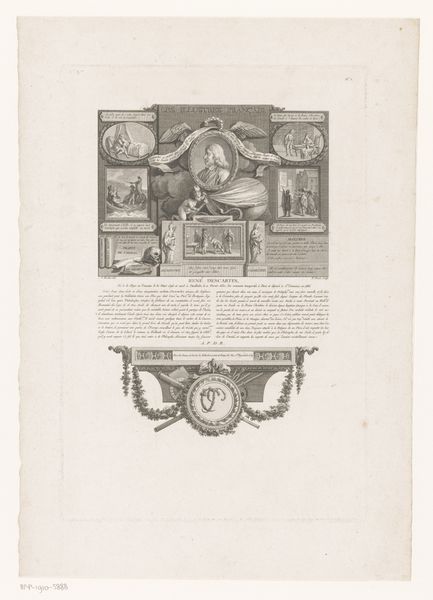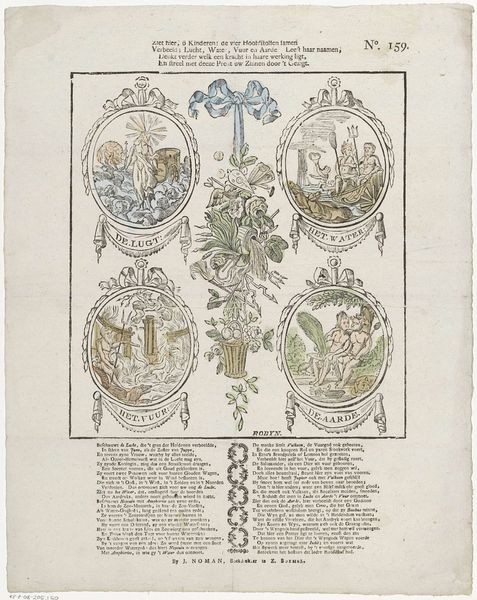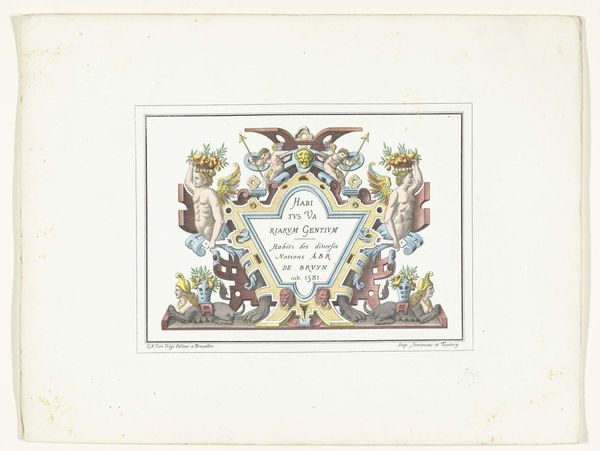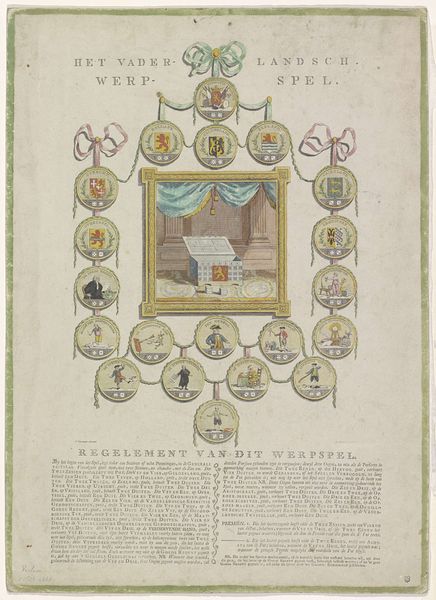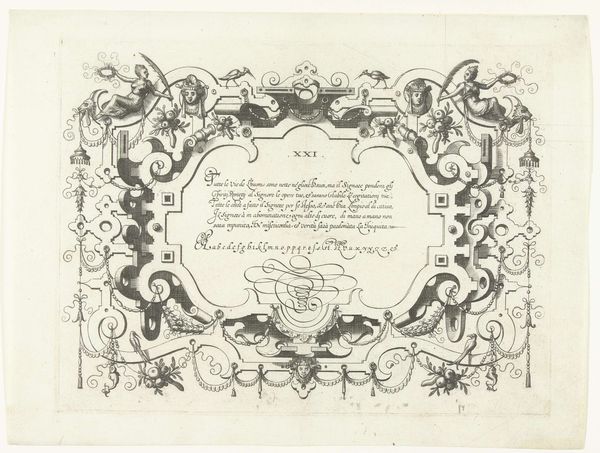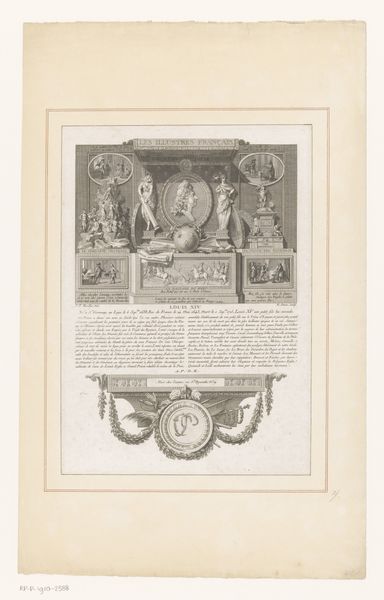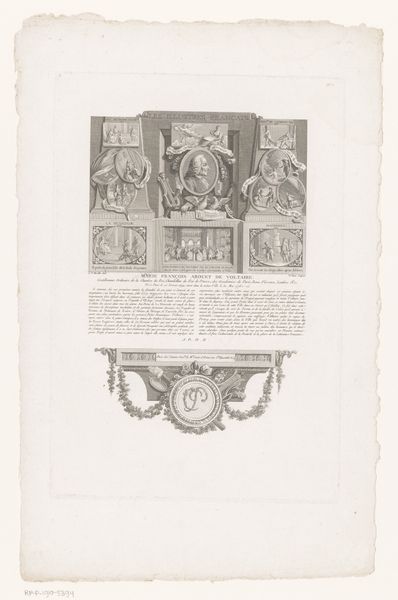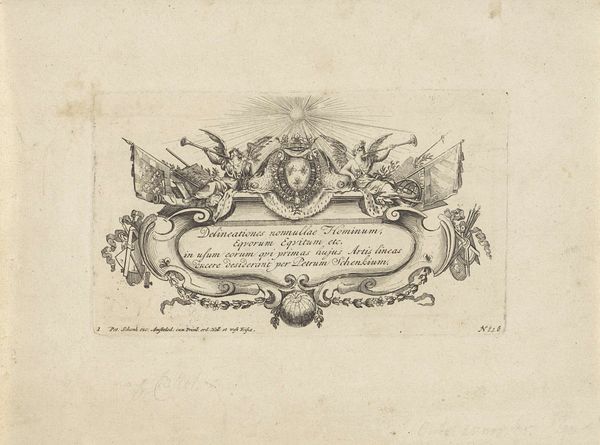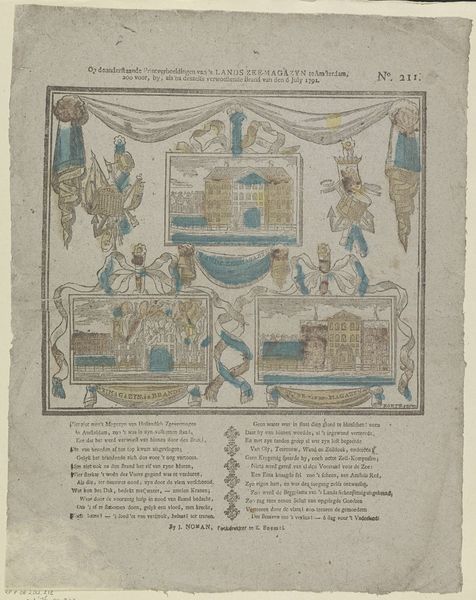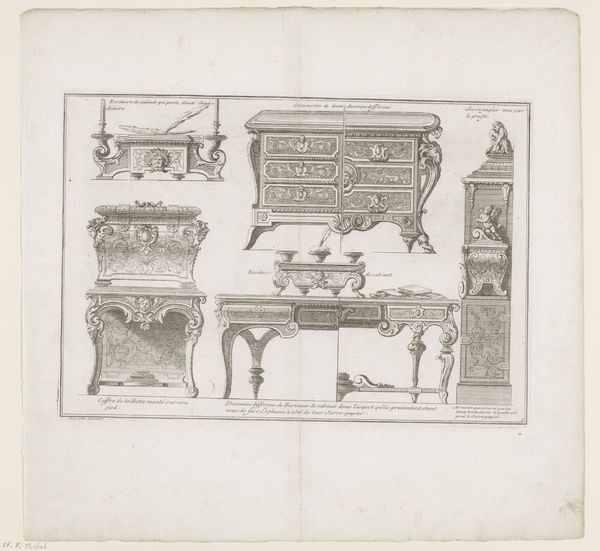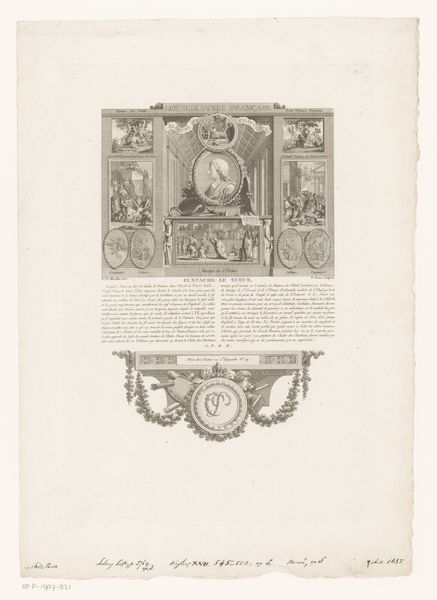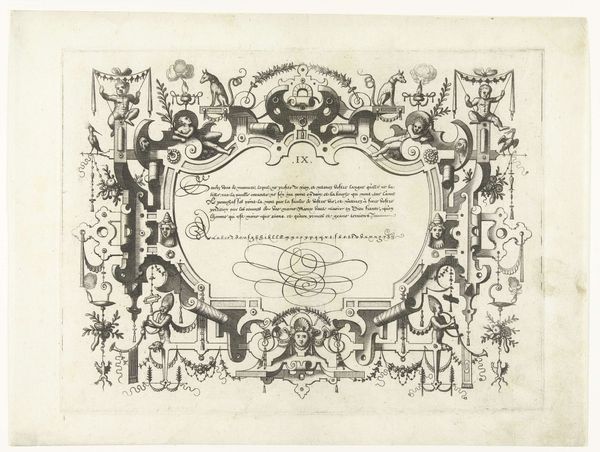
Dimensions: height 393 mm, width 335 mm
Copyright: Rijks Museum: Open Domain
Curator: This print, "Brand in het Zeemagazijn te Amsterdam, 1791," depicts the fire at the Amsterdam naval warehouse, created in 1791 by J. Robyn. What strikes you about it? Editor: Initially, I’m struck by the framing – the draped banners, symbolic gear and ribbons. It creates a sense of order, almost a beautification of what I assume was a chaotic and devastating event. A visual buffer of power and authority, even in disaster. Curator: Precisely. The elaborate framing isn't merely decorative; it presents the fire within the context of civic identity and maritime power. Robyn has carefully composed the three distinct views: a tranquil depiction of the warehouse before, the blaze itself, and likely, the smoldering remains afterward. Each a visual mnemonic cue of civic memory. Editor: It also appears strategically placed, to control how it’s received. What I mean by that is the poem at the bottom adds an element of narrative. Are we meant to passively accept the notion that this tragedy happened for the progress of something bigger, even if unstated? It almost minimizes the destruction. Curator: An intriguing observation, given the era’s reliance on allegory and moralizing narratives. While the blaze physically destroyed part of the Zeemagazijn, Robyn's use of conventional symbolism transforms this moment of loss into an affirmation. Each element functions as a signifier – of Dutch resilience, maritime strength, and civic unity tested, not broken, by adversity. Editor: Perhaps. Though I wonder about perspectives outside the civic framework, the actual lived experiences of the working class and their sense of security. We see cities constantly rebuild from tragic incidents; a grander, stronger building often follows a great loss. But at whose expense is progress usually made? What did the subjects that are depicted actually experience? Curator: A crucial perspective. And one which also underlines how visual imagery has and continues to offer many complex and contested layers of historical experience. By weaving symbols of strength amidst representations of disaster, the print functions as an anchor, holding space for resilience in collective memory. Editor: Thank you; your insights made this work less one-dimensional for me. Curator: The pleasure was all mine; and now hopefully, the audience, too, sees that, as an image, Robyn’s engraving does a lot more than simply "show" a fire, even across all of these years.
Comments
No comments
Be the first to comment and join the conversation on the ultimate creative platform.


